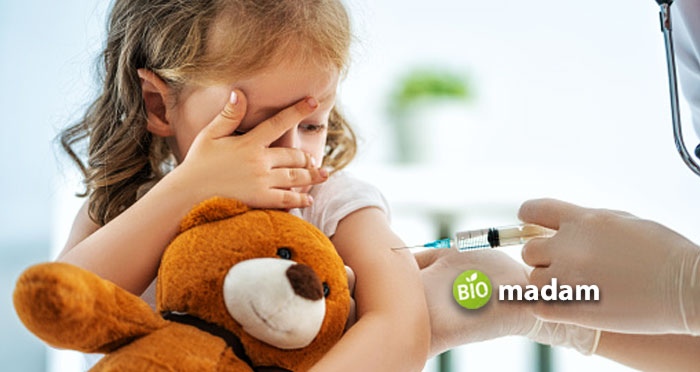A child’s temperature plays a huge role in the baby’s health. Increased body temperature is a manifestation of a protective reaction to infection and certain diseases.. However, an increase in temperature is not always associated with the disease, especially if a child is less than a year old. Note, that a child’s thermoregulatory system is still imperfect. Therefore, children can easily change the temperature of their bodies, depending on the activity and amount of clothing. Hence, it is easy to overcook and even easier to overheat the baby.
Daily rhythms of temperature begin to form at about the age of three. Children up to one year have characteristic features – they may have temperature in fluctuations from 36.5 to 37.4. Moreover, it is normal, with no signs of disease. This usually happens in case of crying, screaming, shaking from anxiety, constipation, teething, rewinding, overheating, violation of drinking regime, and exposure to the sun, after intense movement – crawling, running, and jumping.
Children react to the temperature rise in different ways – it often depends on the cause of the fever. The main signs of temperature increase are dryness of the lips and tongue, thirst; anxiety, lethargy, agitation, crying; rapid breathing and heartbeat; redness or paleness of the face and cheeks; sweating, fever, and body heat.
What to do With an Increase in Temperature?
First of all, do not panic and call a doctor. If the temperature does not rise above 38-38.5 degrees and the child feels relatively well – the temperature should not be brought down. Take into consideration, that temperature is body protection against microbes or viruses. They cease to multiply and die at the temperature of 38 degrees. The immune system of the body activates at the same time different types of immunity activate in the body.

Immediately Call a Doctor or Ambulance in case of:
- fever in infants under the age of 3 months;
- body temperature above 39-39.5 in children up to one year old;
- convulsions or the propensity to it;
- the tension of the neck muscles;
- noisy breathing;
- incessant crying or listlessness, child’s apathy;
- refusal to eat and drink for more than 6 hours;
- diarrhea and vomiting;
- changes of urine color, its delay;
- skin rash;
- lack of antipyretics effect.
Methods of Care for a Baby With Fever
The most important thing you should remember is to full sleep. If the child wants to sleep – do not disturb him. Sometimes, babies cry in their sleep and fever could be a possible reason! Your child’s body is struggling with disease, spending a lot of energy.
It is very important to try to cool the baby’s body by improvised means before giving antipyretics. Wipe the baby with a sponge soaked in warm water – it is effective to reduce the temperature. Firstly, you should wipe his face, then neck, arms, legs, and finally – body. Avoid making your baby wear diapers as it can cause rashes and result in increased fever. If it is needed, offer him your breast.
Medicines to Reduce the Temperature
Sometimes it is necessary to use medications to reduce the temperature of a child. Children are allowed to apply only drugs based on paracetamol (from birth) or ibuprofen (from six months).
Note: This general advice is solely for informational purposes and not an alternative to a Physician. Please consult the physician for complete prescribed medicines.

Jeannie has achieved her Master’s degree in science and technology and is further pursuing a Ph.D. She desires to provide you the validated knowledge about science, technology, and the environment through writing articles.

